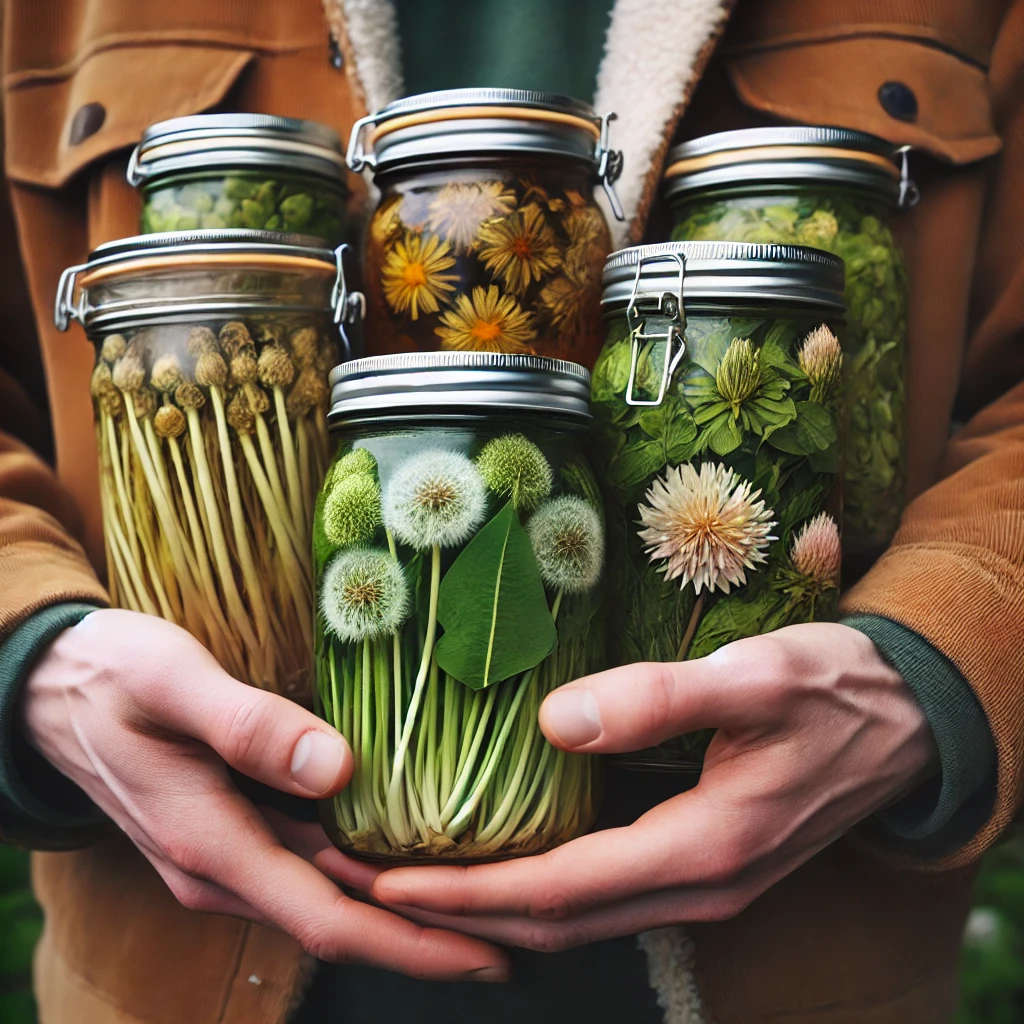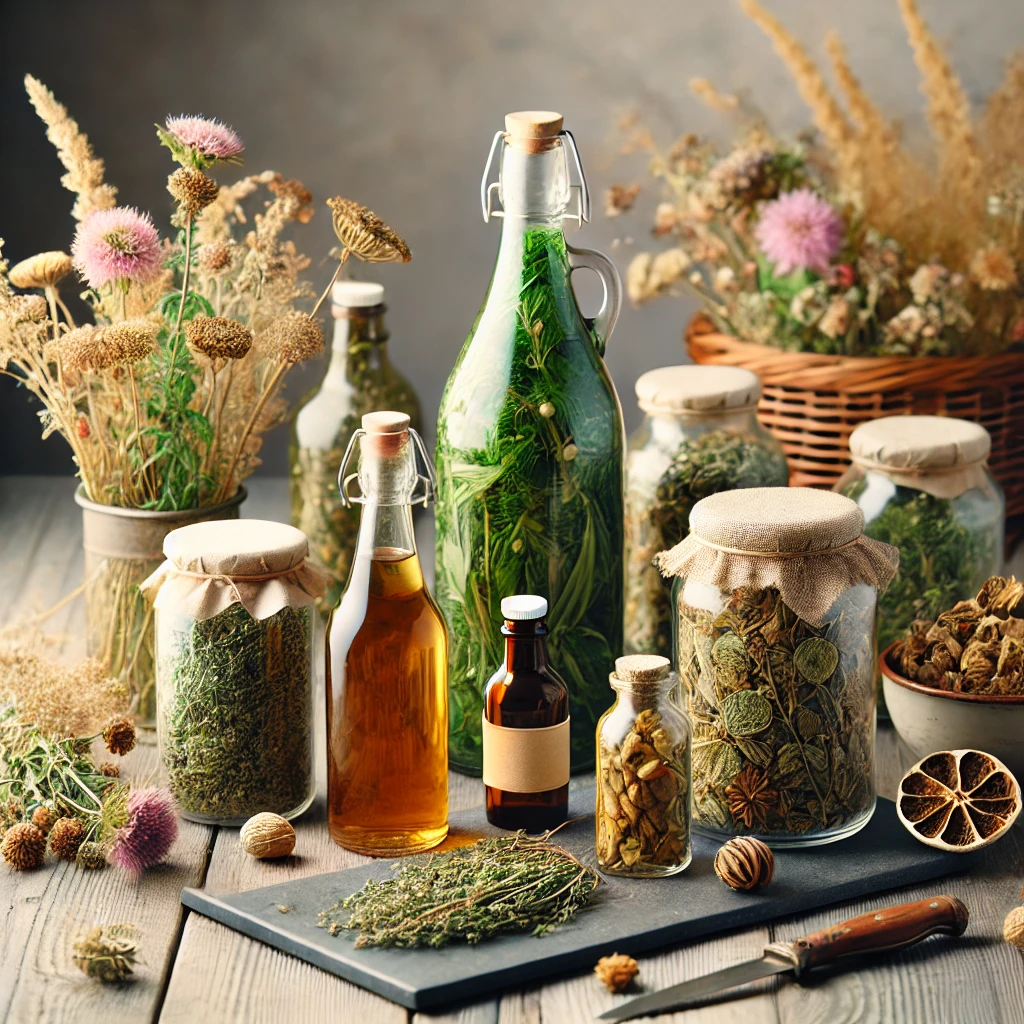Urban foraging preservation techniques offer a sustainable way to gather fresh, nutritious food, but it’s just as important to know how to store and preserve your finds effectively. Whether you’re collecting dandelions from a park or harvesting clover along a quiet trail, proper storage and preservation ensure your plants stay fresh and usable. Here’s a guide to handling, storing, and preserving urban-foraged plants, along with practical recipe ideas.
Why Preservation Matters in Urban Foraging
Preserving your foraged plants is essential to make the most of these resources. Key benefits include:
- Extended Shelf Life: Proper storage methods can keep foraged items usable for weeks or even months.
- Food Security: Having preserved foods on hand increases your resilience in times of scarcity.
- Versatility: Preserved plants can be used in teas, infusions, and meals long after you’ve foraged them.
Essential Tools for Urban Foraging and Preservation
Before heading out to forage, it’s helpful to have a few basic tools:
- Plant Identification Apps: Apps like Seek by iNaturalist can help confirm plant species.
- Portable Containers: Use eco-friendly bags or containers to keep plants fresh while foraging.
- Small Clippers or Scissors: For cutting plants without damaging them.
- Gloves: Protects your hands, especially when foraging in areas with tough vegetation or prickly plants.

With these tools, you’ll be ready to safely and efficiently gather your finds.
Best Preservation Methods for Common Urban-Foraged Plants
Once you’ve foraged edible plants, knowing the right storage method is crucial. Here’s a breakdown of effective preservation techniques for some popular urban edibles.
1. Freezing Fresh Greens and Herbs
- Best For: Dandelion leaves, clover, chickweed, and plantain leaves.
- How-To: Rinse leaves and blanch them briefly in boiling water, then place them in ice water to cool. Pat dry and freeze in small portions in airtight bags or containers. This method locks in nutrients and flavor, and frozen greens can be added directly to soups or smoothies.
- Tip: Label bags with the date and plant type for easy access and rotation.
2. Dehydrating Leaves and Flowers
- Best For: Dandelion flowers, clover flowers, and chickweed leaves.
- How-To: Spread leaves and flowers on a drying rack or use a food dehydrator if you have one. Once completely dried, store in airtight glass jars in a cool, dark place. Dried plants are perfect for teas or as seasonings in soups and salads.
- Storage: Keep dried herbs in small containers to minimize air exposure and moisture.
3. Creating Herbal Vinegars and Oils
- Best For: Hardy plants like dandelion flowers and chickweed.
- How-To: Place washed flowers in a clean glass jar, cover with vinegar (for cooking) or oil (for skincare or culinary uses), and let it sit in a warm spot for 1–2 weeks. Strain and transfer to a fresh jar for long-term storage.
- Uses: Herbal vinegars are great for dressings and marinades, while infused oils work well in cooking or as skin treatments.
4. Making Plant-Based Tinctures
- Best For: Medicinal plants like plantain leaves and dandelion root.
- How-To: Chop the plant parts and place them in a jar, covering with vodka or another high-proof alcohol. Seal and let steep for 4–6 weeks, shaking every few days. Strain the liquid into a dropper bottle for easy use.
- Usage: Tinctures can be used medicinally in small doses. Always research dosage information before use.

Simple Recipes for Preserved Foraged Plants
Incorporate your preserved foraged plants into your meals with these easy recipes:
Herbal Tea Blend
- Ingredients: Dried dandelion leaves, clover flowers, and chickweed leaves.
- How-To: Combine equal parts of each dried plant in a jar. To prepare tea, use 1–2 teaspoons of the blend per cup of hot water. Steep for 5–7 minutes.
- Benefits: This tea provides vitamins A, C, and K along with antioxidants and is a soothing drink for any time of day.
Nutrient-Rich Vinegar Salad Dressing
- Ingredients: Dandelion-infused vinegar, olive oil, salt, and pepper.
- How-To: Mix 1 part dandelion vinegar with 2 parts olive oil, season with salt and pepper, and drizzle over fresh greens.
- Benefits: Adds a nutritional boost to salads, combining flavors with the health benefits of foraged plants.
Freezer-Ready Green Soup
- Ingredients: Frozen dandelion greens, plantain leaves, onion, garlic, broth.
- How-To: Sauté onion and garlic in a pot, then add broth and frozen greens. Simmer until the greens are tender, then blend until smooth. Portion into freezer-safe containers for a nutrient-rich soup that’s ready to reheat anytime.
- Storage: This soup can be stored in the freezer for up to 3 months.
Tips for Long-Term Storage and Rotation
- Label Everything: Always mark the storage date and plant type on jars, bags, or containers.
- Rotate Stock: Use older preserved items first to ensure nothing spoils.
- Choose Airtight Containers: Proper sealing prevents exposure to air, which can cause deterioration over time.
Final Thoughts
With the right preservation techniques, urban foraging can be a sustainable way to add nutritious, natural foods to your diet. By drying, freezing, and infusing your finds, you’ll extend the life of these plants and build a versatile pantry of foraged foods. Embrace urban foraging as a powerful addition to your survival strategy, allowing you to enjoy the fruits of your labor long after the season has passed.
